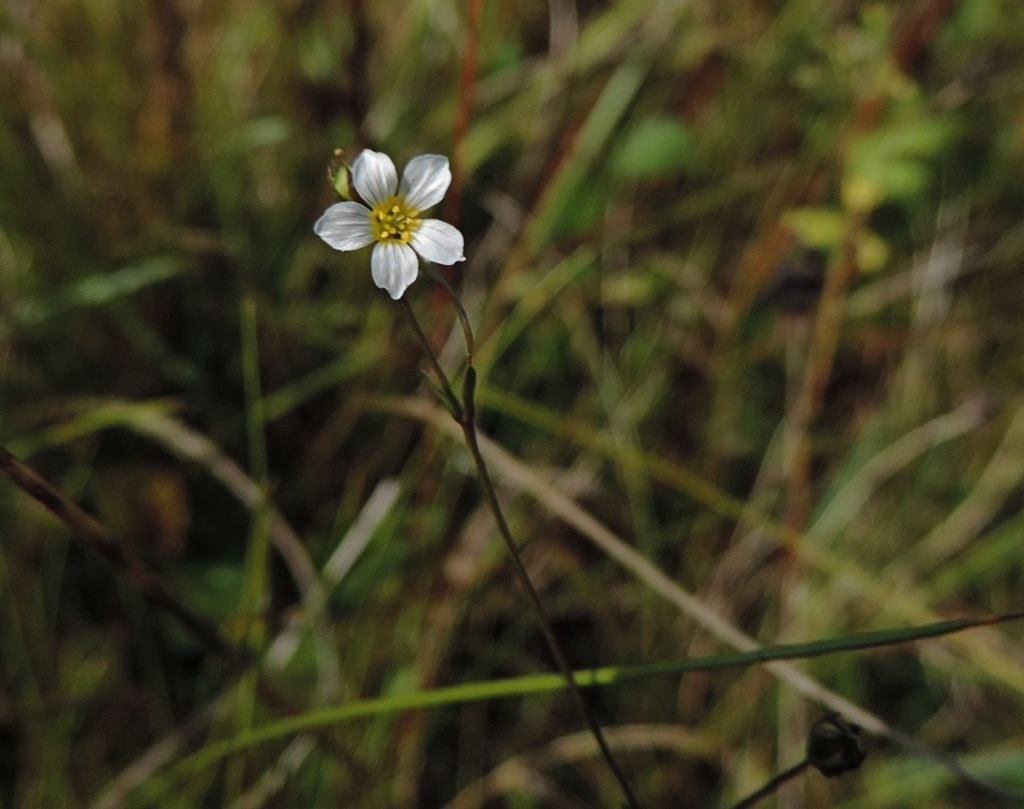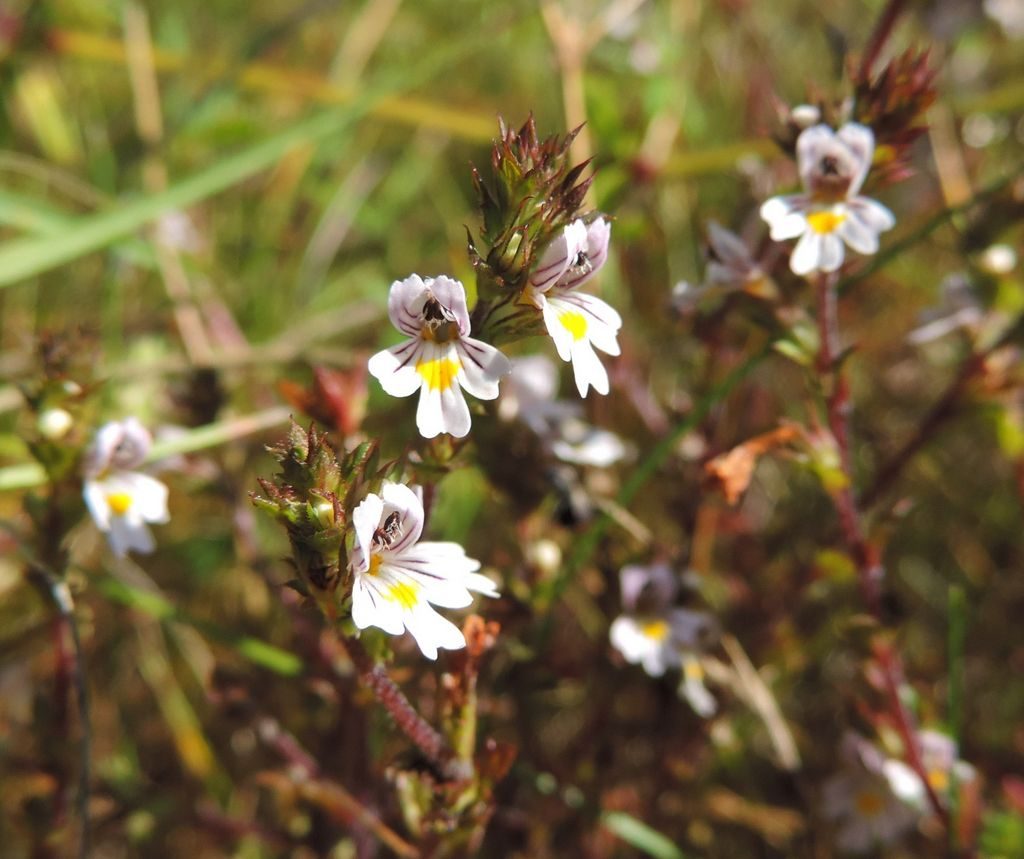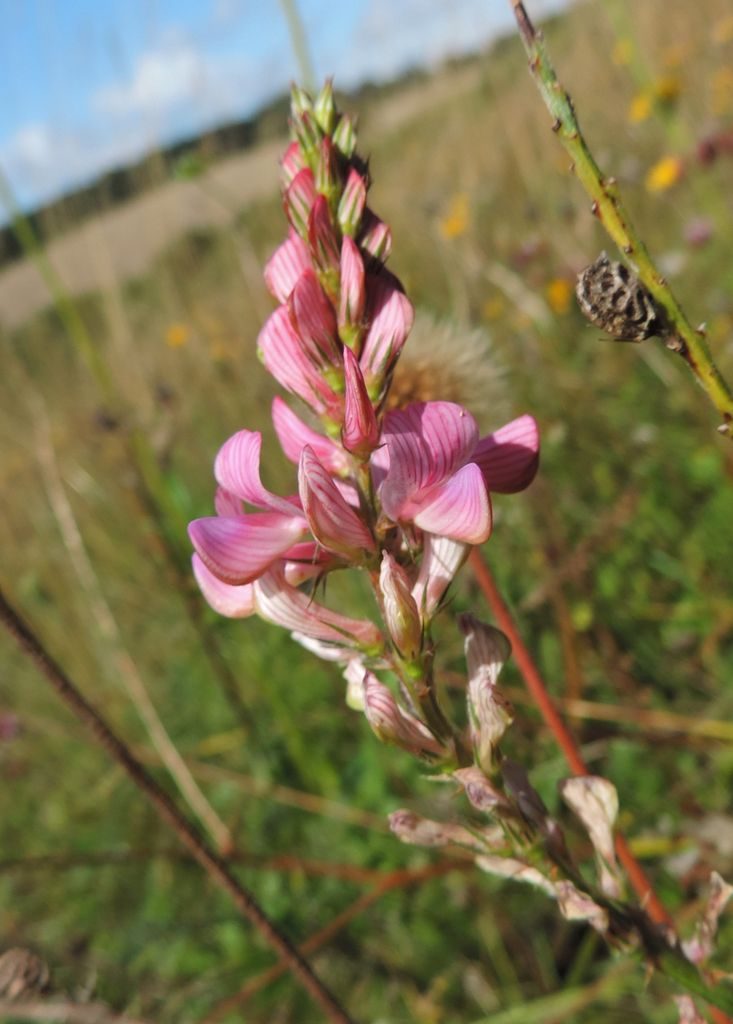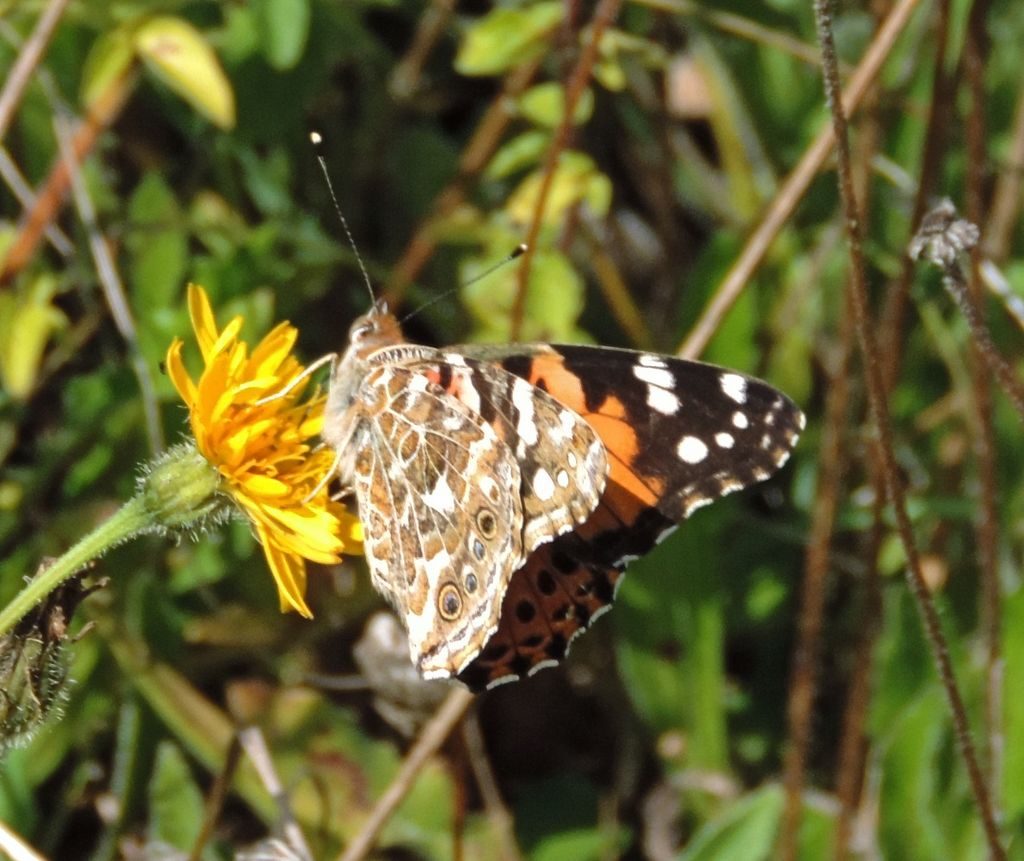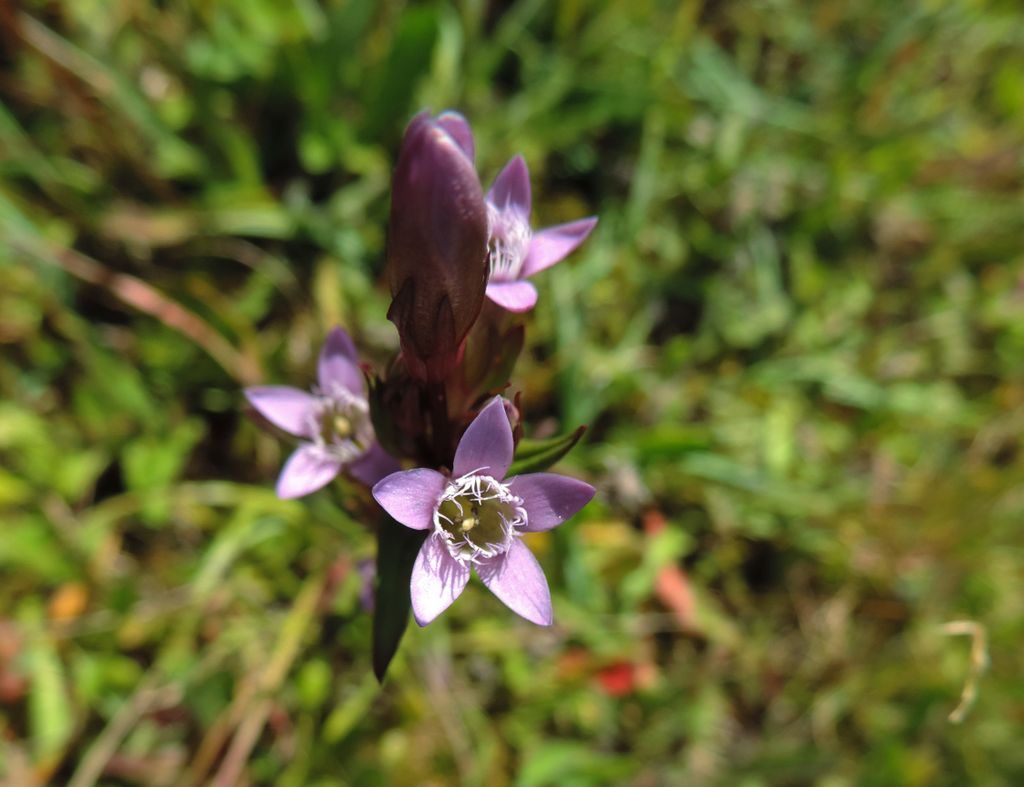Des Sussex organised a visit on Wednesday 21 August to a farm near Lambourn, by kind permission of the Estate Manager, Robert Price. The farm has a number of linked areas where arable farmland has been successfully restored to chalk grassland and there is also some SSSI chalk grassland. Linking up the grassland areas not only makes it easier for wildlife to move around, but also makes it easier to move grazing stock. The walk started out down the track towards Cleeve Cottage, passing a pond and a field of restored grassland from which a hay crop had recently been taken. In front of the cottage was an enormous old Ash tree. Its girth was measured as 4.6 metres, indicating that it was about 200 years old. The track continued along the edge of a wood where the regrowth on a strip of coppiced Hazel had been badly nibbled by deer. The Hazel on the other side of the track had been cut at a greater height and had regrown much better. A few plants of Nettle-leaved Bellflower were noted here. Several fields had been left with uncultivated headlands. The walk continued up Thorn Hill Bank, which had been split into two fields and restored to chalk grassland. Des explained that the fields had been sprayed off and then sown with a wildflower mix. For several years, they were mown tightly to control weed growth. The result has been floristically rich and varied grassland. Flowers seen in the first field included Harebell, Clustered Bellflower, Common and Greater Knapweed, Fairy Flax, Kidney Vetch, a Broomrape, Dropwort, Wild Marjoram, Sainfoin, Yellow Rattle and Eyebright, while butterflies included Common Blue, Small Heath, Meadow Brown and Painted Lady. A Long-winged Conehead, a small green bush-cricket, was identified here as well as Roesel’s bush-cricket. The second field had been reseeded at an earlier date and appeared to have less grass than the first field. Wild Mignonette and Common Rock-rose were seen here, and there were a number of orchid seed-heads. Moths included Lime-speck Pug, Yellow Shell and Silver Y, and a Brown Argus butterfly was seen. On the other side of the fence at the top of the field was a colourful nectar and bird seed strip, with purple Phacelia, red poppies, yellow and white crucifers, blue Flax and tall green Quinoa. The next reseeded field ran across the top of BBOWT’s Watts Bank reserve. Autumn Gentian plants were flowering here. There were good numbers of fresh Small Tortoiseshell butterflies, together with Brimstones, Small Whites and a single Small Copper. The route back led along the White Shute by-way, where Spurge Laurel and Nettle-leaved Bellflower were growing on the banks. The final destination was the SSSI grassland of Cleeve Bank. There appeared to be a higher proportion of grass here than in the reseeded fields. Quaking Grass and Dwarf Thistle were also more abundant. Insects seen here included a Dark Bush-cricket and, probably the rarest sighting of the day, a Hornet Robber-fly. The walk was followed by lunch at the Tally Ho pub at Hungerford Newtown.
Pictures by Rob Stallard


